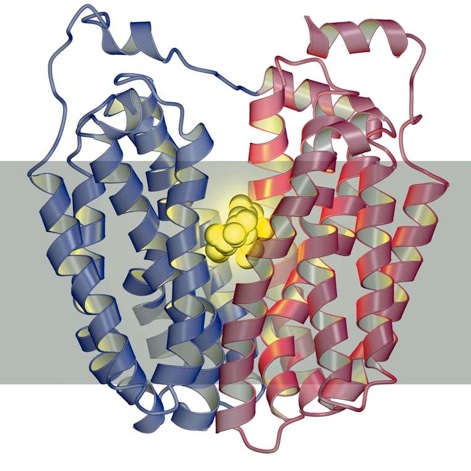
Welcome to LacY
Kaback Lab - Department of Physiology at UCLA |

| The cell membrane or cytoplasmic membrane seperates the interior of cell from the outside environment. One of the most important features of biological membranes is that they are selectively permeable. Membrane transport proteins facilitating this selective permeability, so-called permeases, are highly intriguing macromolecules, and many catalyze translocation of solute across a membrane against a concentration gradient (i.e., active transport). It is now well known that driving force for a variety of seemingly unrelated phenomena (e.g., secondary active transport, oxidative phosphorylation, rotation of the bacterial flagellar motor) is a bulk-phase, transmembrane electrochemical proton or sodium gradient (i.e., Δμ̃H+ or Δμ̃Na+). However, insight into the molecular mechanisms by which free energy stored in such gradients is transduced into work or into chemical energy has just begun. Studies on transport and bioenergetics with the lactose permease of the bacterium Escherichia coli (LacY) as the paradigm have revolutionized the field of membrane transport. From (i) the initial discovery that right-side-out membrane vesicles can be used as a model system to study transport to (ii) the development of probes for quantifying membrane potentials and pH gradients in microscopic systems to (iii) site-directed mutagenesis and Cys-scanning mutagenesis to (iv) purifying LacY in a completely functional state to (v) obtaining x-ray crystal structures to (vi) engineering LacY for all manner of biochemical and spectroscopic studies, the Kaback laboratory has pioneered developments in the field for over 45 years.
|
Copyright
2011 | All Rights Reserved | Kaback Lab
|
Web-site Updated 10//2014